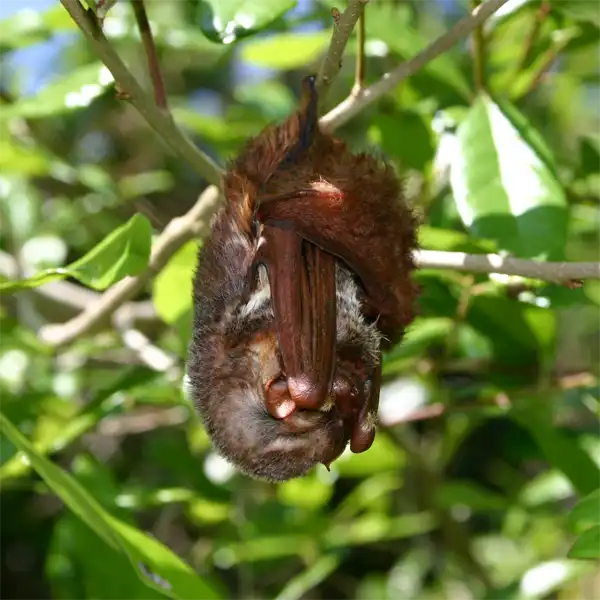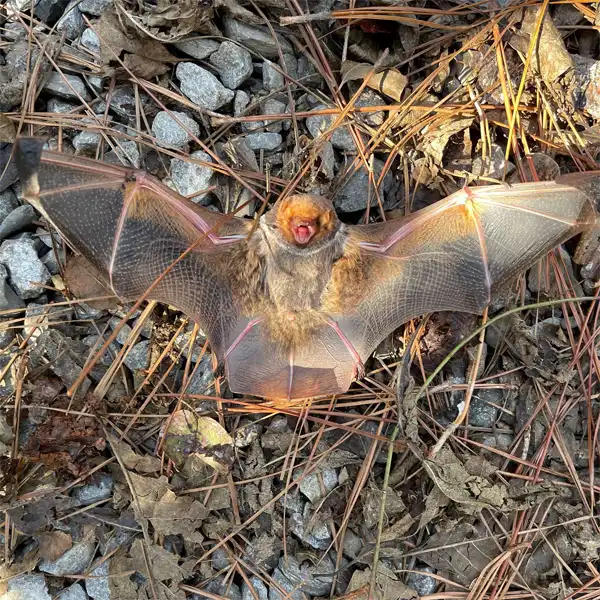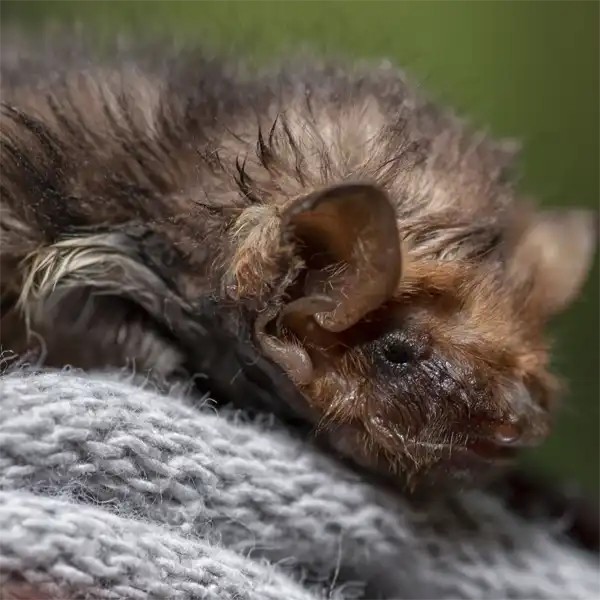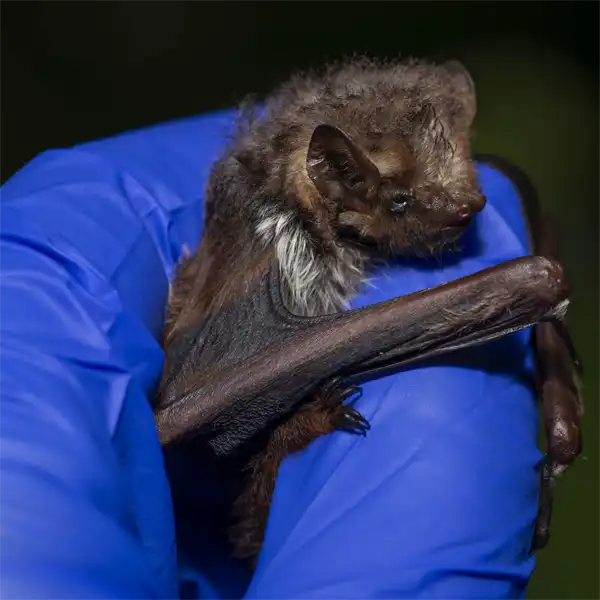Seminole Bat
- Scientific Name
- Lasiurus seminolus
- Also Known As
- Seminole Bat
- Range
- All of Florida
- Diet
- Ants, Bees, Wasps, Beetles, Moths
- Life Expectancy
- 5 - 6 Years
Quick Links
The Seminole Bat in Central Florida
The Seminole bat (Lasiurus seminolus) is a small, reddish-brown vesper bat found in the southeastern United States, including central Florida. As its name suggests, this species has a strong association with the Seminole Native American tribes and is well-adapted to the subtropical climate of the region. This article provides identification tips, biology facts, and information on diet, health risks, habitat, and control methods for the Seminole bat in central Florida.
Appearance and Identification
The Seminole bat can be identified by the following juvenile and adult characteristics
The Seminole bat is often confused with the related eastern red bat (Lasiurus borealis) which has brighter, more orange fur. The evening bat (Nycticeius humeralis) is also similar but has a pointed tragus and darker black shoulders. Careful examination of anatomical features is needed for positive identification.
Maturation Rate
Seminole bat pups grow rapidly and are ready for flight at 3 weeks old. They reach adult size by 6 to 8 weeks after birth. Sexual maturity is attained in the first autumn after birth. The young bats then disperse to establish new territories.
Habits and Behavior
Seminole bats emerge at dusk to forage and return to roost sites before dawn. They fly steadily closer to vegetation and exhibit rapid zig-zagging over open areas. Seminole bats roost solitarily in the leaves of palms and oak trees. They rarely share roosts like other species. Males establish summer territories with mating roosts that females visit.
Reproduction and Lifespan
Mating occurs in autumn. Females store sperm over winter and ovulate in early spring. The gestation period is 80 to 90 days, with pups born from late May through mid-June. Typical litter size is 2 to 4 pups. Females carry pups in flight temporarily during the first few weeks after birth. Lifespan in the wild may reach 5 to 6 years.
Ideal Habitat and Range
The warm, humid climate of central Florida provides ideal habitat for Seminole bats. Average temperatures range from the 60s°F (15°C) in winter to over 90°F (32°C) in summer. Rainfall exceeds 50 inches (1270 mm) per year, with more precipitation during the rainy season from June to September.
These conditions support dense oak hammocks, pine flatwood forests, cypress swamps, and tropical vegetation like palm trees where the bats roost and forage. Plentiful flying insect populations provide ample prey. Urban areas also provide roost sites in palms and access to water sources like ponds and lakes. The Seminole bat thrives across the diverse ecosystems of central Florida.
Diet and Feeding
Seminole bats are insectivorous, feeding on a variety of night-flying insects. Major prey includes:
- Moths
- Beetles
- Flies
- Mosquitoes
- Mayflies
- Caddisflies
They capture insects in flight using echolocation. The broad wings and flexible tail membrane allow excellent aerial maneuverability and hovering to grab prey. Seminole bats drink while flying by skimming across water surfaces. They require up to half their body weight in insects nightly – around 0.2 ounces (5-6 grams) for an adult.


Common Health Risks
Like other bat species, Seminole bats can transmit rabies if handled improperly. Their small size and solitary roosting habits make direct human contact unlikely. However, bites should receive immediate medical attention. Histoplasmosis is another fungal disease associated with accumulated bat guano.
Proper protective gear should be worn during exclusion or cleanup efforts in infested structures. No other zoonotic diseases have been specifically linked to the Seminole bat.
Preventing Seminole Bat Infestations
The main prevention goal is excluding the bats from potential roost sites in buildings. Identify and seal any openings wider than 1/2 inch (1.3 cm) used as entry points. Ensure chimneys, roof vents, gable vents, and eaves do not allow access. Monitor palm trees and oak trees near structures for roosting bats. Trim back nearby vegetation to discourage resting sites.
Gentle harassment like flashing lights or ultrasound devices may dissuade roosting on a building. If bats have already been roosting inside, consult a professional bat removal service to humanely evict them and seal up entryways permanently.
Seminole Bats in Central Florida – Conclusion
In summary, the Seminole bat is well-suited to central Florida’s warm, humid climate. Its small size, solitary habits, and insectivorous diet pose minimal risks to humans if excluded properly from structures. With vigilant inspection for potential entry points and swift, humane removal of any indoor roosts, Seminole bats can be prevented from taking up residence in buildings.
An integrated bat management plan emphasizing exclusion is key to resolving Seminole bat issues while respecting their ecological importance.







